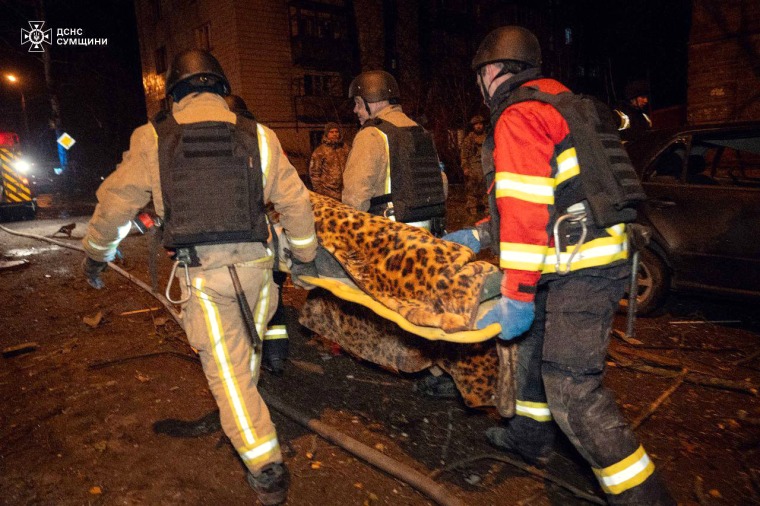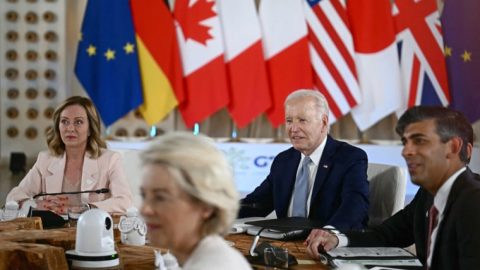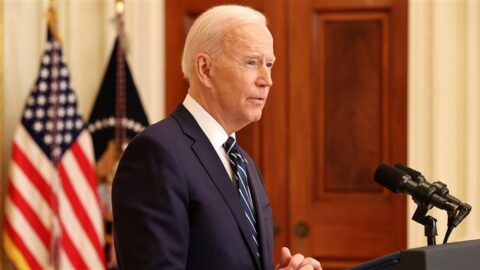The Kremlin said Friday that its attack using a new ballistic missile was a warning to Ukraine’s “reckless” Western allies, the culmination of a week of escalating threats from President Vladimir Putin.
But despite Moscow’s deployment of the new weapon, which carried multiple warheads, the United States and its European partners have vowed not to be deterred in their support for Kyiv.
New details also emerged Friday about the deepening alliance between Moscow and Pyongyang, North Korean leader Kim Jong Un issued his own nuclear threat to his U.S.-backed southern neighbor and accused Washington of fueling tensions.
The latest round of saber rattling from Putin and Kim has come during a week in which the war in Ukraine passed 1,000 days and with Washington preparing for a change in leadership.
Still, Western officials and analysts have sought to play down what they said was a clear effort to intimidate Kyiv and its backers.
In a televised address Thursday, Putin said he had ordered a strike with a new intermediate-range ballistic missile in response to Ukraine’s use of long-range Western weapons to hit targets inside Russia for the first time.
Kremlin spokesman, Dmitry Peskov, said Friday that the message sent by this should be clear.
“Reckless actions by the West, which supply missiles to Ukraine and later take part in strikes against Russia, can’t be left without a Russian response,” Peskov told a daily news briefing. “Russia has shown its capabilities and the nature of our future possible responses is also rather clear.”
Ukrainian President Volodymyr Zelenskyy decried the use of the new missile on the eastern city of Dnipro as a “severe escalation in the scale and brutality of this war” in his nightly address Thursday.
He said it was a second major step toward escalation following the Kremlin’s deployment of more than 10,000 North Korean troops, a deepening of the alliance between the two countries.
On Friday Kim warned that due to U.S. hostility his region had never faced a greater risk of “the most destructive thermonuclear war,” according to the KCNA state news agency.
A top official in U.S. ally South Korea shone new light on what Kim may be getting out of his Putin partnership.
Russia has supplied air defense missiles and equipment to North Korea in exchange for the thousands of troops, National Security Adviser Shin Won-sik said in an interview on local TV.
Moscow may also have supplied Pyongyang with as much as a million barrels of oil since March, according to new analysis laid out in a report from the London-based Open Source Center and the BBC.

The Kim-Putin alliance was likely one factor behind the decision of Washington and its allies to relax restrictions on Kyiv. And NATO, the Western military alliance bracing for a second Donald Trump presidency, said it would not stop that support in the face of Putin’s threats.
“Deploying this capability will neither change the course of the conflict nor deter NATO allies from supporting Ukraine,” said alliance spokesperson Farah Dakhlallah.
Biden administration officials briefed Ukraine and other allies in recent days to help them prepare for Russia possibly using the new weapon, according to a U.S. official.
“Russia may be seeking to use this capability to try to intimidate Ukraine and its supporters or generate attention in the information space, but it will not be a game changer in this conflict,” the U.S. official said.
Ukraine’s use of long-range Western weapons to strike Russian soil followed months of pleading during which it came under intensifying Russian attacks in the air and on the battlefield.
In a sign of the danger felt on the ground, the Ukrainian parliament canceled a session Friday and reduced staff presence due to the increased threat of a missile attack on the area housing government buildings, the country’s public broadcaster said.
Meanwhile, Russian Defense Minister Andrei Beluosov said that his forces had sped up their advance and “disrupted” the Ukrainian military’s plans for the upcoming year.
On a visit to a command post of the country’s “north” group of forces — the group targeted by a Ukrainian strike in the Kursk border region that used British Storm Shadow long-range missiles — Beluosov said that Ukraine’s “best units were ground down here” and that “the advancement [of the Russian Armed Forces] has accelerated.”
Russia’s defense ministry, which posted the comments Friday, did not say when or where the visit took place.
Despite the Kremlin’s public bullishness, analysts were largely unconvinced by its week of escalating threats.
Russia clearly felt the need to respond to Ukraine’s crossing its red lines, said Andrey Baklitskiy, a senior researcher at the Geneva-based United Nations Institute for Disarmament Research. But, he told NBC News in a phone interview Friday after the new missile was launched, it is “unclear what this is adding to Russian capabilities.”
While the new missile had multiple warheads, it was not clear how precise they were, Baklitskiy said. He added that the target of a massive missile factory in Dnipro would be hard to miss.
The U.S. said the “Oreshnik” — or “Hazel tree” — was a new, experimental type of missile based on the design of the existing RS-26 Rubezh intercontinental ballistic missile.
Kyiv initially claimed that Russia had fired an ICBM. It said Friday that the missile flew for 15 minutes and reached a maximum speed of beyond Mach 11.
The weapon would also likely be “quite expensive,” Baklitskiy said, so not something the Kremlin could regularly deploy.
While Baklitsky conceded that the attack still had its uses as a thinly veiled threat that it could one day unleash a nuclear payload, he caveated that by pointing to signals that the Kremlin was still eager to avoid significant escalation — Russia notified U.S. officials about the attack using nuclear risk reduction communication channels.
“You are responding with something you haven’t used before,” Baklitskiy added. “But then it’s not escalatory in the sense of things getting out of hand.”







Recent Comments